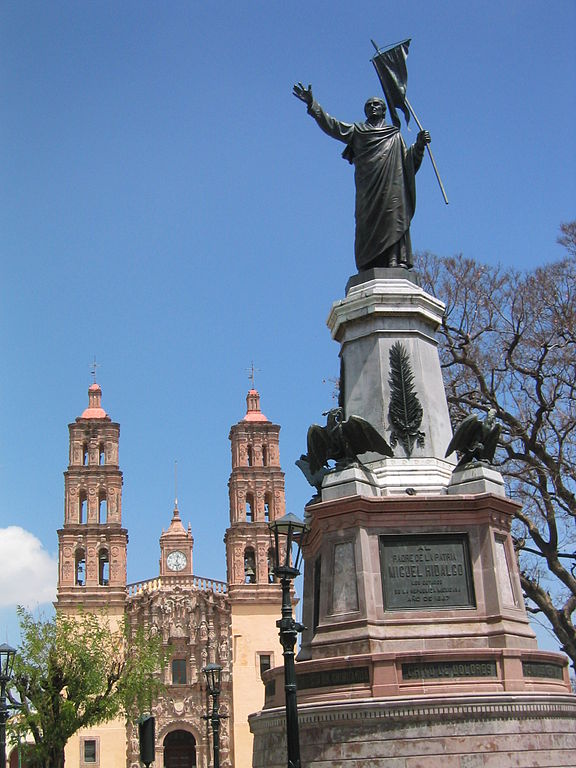*Image Credit: Wikipedia In the tiny town of Dolores, deep in the heart of Mexico, a Catholic priest triggered the fight for independence from Spain on September 16, 1810. Father Miguel Hidalgo, calling his parishioners to the steps of his church early in the morning, urged the gathered crowd to rise up against the European governors to form a new nation. The “Grito de Dolores” (“Cry of Dolores”) would go on to be known as the Grito de la Independencia (“Cry of Independence”) as the war began in the days that followed. Nestled 60 miles east of modern Leon, Dolores was little more than a church with a few surrounding homes. Within its boundaries, however, resentment of the Spanish government simmered under the surface, leading many criollos — people of European descent born in Mexico — to discuss the possibility of rising up to claim the rights they had been denied. Though higher on the social scale than many other groups in the area, criollos were treated as second-class citizens by Spanish settlers and the administrators overseeing the territories. Early in April of 1810, with plans to launch a revolt becoming clearer by the moment, members afraid of Spanish reprisals turned dozens of likely participants over to colonial officials. Believing he might join his fellow conspirators in jail, Hidalgo convinced his brother and two other men to gather a posse to apply pressure on the local sheriff. Arriving late on April 15, the mob managed to arrange for the release of 80 prisoners, giving new life to the idea of a rebellion. Knowing the government was now placing more scrutiny on those who had been set free, the independence movement shifted underground once more to regroup, remaining relatively silent until 6:00am on September 16, 1810. Hidalgo, rising to stir the fervor of revolution, told his fellow priests to ring the bells of the Catholic church at the center of Dolores. As his parishioners instinctively followed the sound to hear the announcement, Hidalgo moved out onto the steps to address the crowd. Though his exact words have been lost to history, historians believe he railed against the Spanish government and called for the citizens to set themselves free of the yoke of colonial power. The impassioned plea worked. Twelve days later, Hidalgo and as many as 50,000 others marched on the city of Guanajuato as one large, angry mass. Focusing on the granary near the center of town, where loyalists had taken shelter, the rebels managed to force the 400 Spaniards who had brought most of their belongings with them to surrender — a fact most of the revolutionaries ignored as they slaughtered the defenders and stole whatever goods they could carry. The first step in a war for independence that would last more than a decade, the Battle of Guanajuato only came about because of Hidalgo’s fiery speech in Dolores. To commemorate the spark that lit the fire of a free Mexico, September 16 is now celebrated as Independence Day.
September 16, 1810 CE – Father Miguel Hidalgo Launches the Mexican Revolution with the Grito de Dolores
*Image Credit: Wikipedia In the tiny town of Dolores, deep in the heart of Mexico, a Catholic priest triggered the fight for independence from Spain on September 16, 1810. Father…
281
